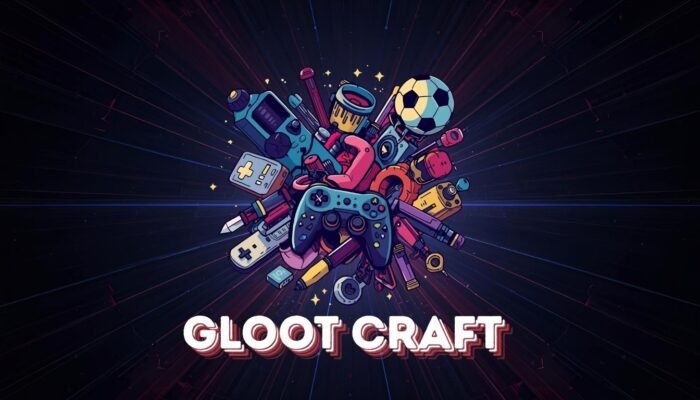What is BANT Streamlining Sales Conversations
BANT (Budget, Authority, Need, Timeline) is a proven sales qualification framework that helps streamline sales conversations by identifying key decision-making criteria early in the process. By focusing on a prospect’s budget, their decision-making authority, the specific needs they want to address, and the timeline for implementation, sales teams can prioritize high-value leads and tailor their approach. This methodology boosts lead conversion rates, enhances sales pipeline efficiency, and ensures that sales reps focus on prospects who are most likely to close. Incorporating BANT into your strategy improves customer engagement, optimizes resource allocation, and aligns with modern data-driven sales techniques. By using BANT, organizations can reduce wasted efforts and increase their chances of achieving revenue growth and customer satisfaction.
Why Structured Sales Methodologies Matter
BANT Sales conversations are the pivotal moments where opportunities are either captured or lost. The quality of these conversations can significantly affect a company’s bottom line. Adopting structured sales methodologies ensures that sales teams have a concrete approach to qualify leads, which can increase efficiency and improve the chances of converting potential clients into long-term customers. These approaches are fundamental to how they guide the seller through the conversation by employing a formulaic approach refined over time and providing clear and actionable information. By following a structure, sales agents are more likely to address all the key issues and reduce the chances of critical information being overlooked.
The BANT Framework and Its Place in Modern Sales
The BANT framework, an acronym for Budget, Authority, Need, and Timeline, has been a blueprint for sales professionals for generations. It provides a uniform language for the sales team and a checkpoint system for efficiently qualifying leads. It facilitates better use of time and resources by identifying the most promising prospects early in the process. However, today’s sales environment is much more complex than when BANT was first conceptualized. Thus, modern sales professionals must utilize it to align with the present-day context — considering factors such as digital influence, lead scoring, and enhanced customer expectations. Adequately done, it can help a salesperson quickly assess a prospect’s viability and navigate the conversation toward areas most likely to close a sale.
Modernizing the Traditional Approach
Modern sales strategies call for an evolution in applying traditional frameworks. While the core principles remain unchanged, consistent innovation in sales tactics and customer relationship management warrants a fresh approach to an old favorite. Adapting BANT to the modern consumer means tailoring conversations based on rich, contextual data and utilizing digital tools to understand better and serve prospects at every stage of their journey. This could include social media insights, behavioral analytics, and other forms of customer intelligence to tailor the conversation in real-time, making the framework applicable and optimal for modern sales challenges.
Customizing Conversation Techniques for Different Sales Stages
A one-size-fits-all method needs to address the nuances of individual customer journeys. As such, deploying the BANT framework requires a discerning eye and a flexible approach. Initial conversations might delve deeper into understanding a prospect’s ‘Need‘ and ‘Authority‘ to ascertain the level of interest and potential buying power. Conversely, nearing the bottom of the sales funnel, ‘Budget’ and ‘Timeline’ often become the major talking points to establish the deal’s feasibility. Knowing how to pivot one’s focus amongst these elements and adapt conversation techniques accordingly can make a difference in nurturing leads to fruition.
How to Use BANT in a Sales Call
Using the BANT framework in a sales call helps sales professionals qualify leads effectively and close deals faster. Begin by exploring the prospect’s budget to ensure financial feasibility, asking questions to uncover their spending capacity for the solution. Next, identify the authority—determine if the contact is the decision-maker or part of the approval process. Then, address the needs by understanding the specific challenges or goals the prospect wants to achieve, emphasizing how your product or service solves their problem. Finally, discuss the timeline, asking when they plan to implement a solution to align with their schedule. By incorporating these steps seamlessly into the conversation, sales teams can enhance lead qualification, improve conversion rates, and build stronger customer relationships.
Technology’s Role in Enhancing Sales Conversations
The revolution brought about by technology in the sales sector cannot be overstated. New software, particularly CRM platforms, has allowed sales professionals to organize tasks and analyze data for better decision-making. These systems enable detailed tracking of a client’s interactions with a company, thus enriching the BANT framework with a pool of information that can be strategically used to tailor conversations. Integrating AI and machine learning further fine-tunes this process, making sales conversations proactive, predictive, and highly personalized.
Leveraging Data for Better Outcomes
Data is undeniably the currency of modern sales strategies. It empowers sales teams to apply the BANT criteria precisely, leading to more effective conversations. Rather than speculative questioning, sales professionals can enter conversations armed with historical data, insight into client preferences, and a comprehensive understanding of past interactions with the brand. The groundwork for successful conversations is laid by aligning BANT with actionable data, setting the stage for a more meaningful engagement with potential customers.
Common Pitfalls in Sales Conversations and How to Avoid Them
A pitfall many sales professionals encounter is an imbalanced focus on specific aspects of the BANT framework during their conversations. For example, aggressively pursuing a client’s budget constraints can be off-putting if their needs need to be sufficiently discussed and understood. The idea behind avoiding such pitfalls is to approach BANT not as a checklist but as a fluid structure that guides the conversation naturally. It entails balancing picking up the necessary knowledge and building a relationship built on respect and understanding. Frequent analysis of conversation strategies can assist in spotting biases and guarantee that every element of the framework is given the consideration it deserves.
Best Practices for Training Sales Teams on BANT and Conversation Skills
Applying the BANT methodology effectively requires more than cursory knowledge; it demands a firm grasp of conversational dynamics and customer psychology. Therefore, regular and comprehensive training is essential for sales teams. This training often combines interactive learning activities, role-playing scenarios, and mentorship programs. These practices provide sales professionals with a safe environment to explore various conversation strategies and receive constructive criticism to refine their techniques. Additionally, integrating consistent coaching and fostering a culture of development within the team ensures that BANT remains a living concept that evolves alongside the sales professionals who use it.
Alternatives to BANT
Here are some popular alternatives to the BANT framework for sales qualification, each offering unique approaches to understanding and prioritizing prospects:
- CHAMP (Challenges, Authority, Money, Prioritization): Focuses on identifying a prospect’s core challenges, understanding their authority level, assessing budget, and prioritizing their needs.
- FAINT (Funds, Authority, Interest, Need, Timing): Designed for outbound sales, this method emphasizes gauging interest and identifying available funds before qualifying leads.
- MEDDIC (Metrics, Economic Buyer, Decision Criteria, Decision Process, Identify Pain, Champion): A robust framework that highlights measurable results and pain points while mapping the buyer’s decision-making process.
- GPCTBA/C&I (Goals, Plans, Challenges, Timeline, Budget, Authority, Negative Consequences, Positive Implications): Tailored for inbound sales, it provides a deep dive into a prospect’s goals and challenges while assessing their buying capacity and urgency.
- SPIN (Situation, Problem, Implication, Need-Payoff): Encourages consultative selling by exploring the prospect’s current situation, identifying problems, and highlighting the benefits of resolving them.
- ANUM (Authority, Need, Urgency, Money): A simplified approach focusing on finding the decision-maker, understanding the need, assessing urgency, and determining budget.
Each framework aligns with specific sales strategies and customer engagement models, helping teams optimize their lead qualification process and drive revenue growth.
Future Outlook: The Evolution of Sales Conversations
The future of sales conversations is an exciting horizon, teeming with the promise of new technologies and evolving buyer behaviors. Progressive sales teams will continue to adapt and fine-tune frameworks like BANT to remain congruent with these changes. Reflecting upon the transformation thus far suggests that the future will bring even more data-driven conversations, a stronger focus on customer experience, and a greater reliance on technology to provide the insights necessary for successful engagement. Sales professionals must harness their insight and adaptability to survive and thrive in the shifting landscape of customer relations.
Key Takeaways:
- Integrating structured sales methodologies such as BANT into everyday sales encounters.
- Adapting conversation frameworks skillfully across diverse stages of the sales process.
- Leveraging the latest technology to enhance sales dialogue and strategy.
- Adhering to industry best practices to continually refine sales communication skills.
Final Thoughts on BANT Streamlining Sales Conversations
BANT remains a timeless and effective framework for streamlining sales conversations and qualifying leads. By focusing on budget, authority, need, and timeline, sales professionals can prioritize prospects, optimize their sales pipeline, and reduce wasted efforts. This methodology fosters efficient lead qualification, ensuring that resources are directed toward opportunities with the highest potential for conversion. While alternative frameworks like CHAMP, MEDDIC, and SPIN offer nuanced approaches, BANT’s simplicity and adaptability make it a reliable choice for sales teams across industries. By integrating BANT with modern sales tools and strategies, businesses can improve customer engagement, achieve higher close rates, and drive consistent revenue growth in today’s competitive market.






